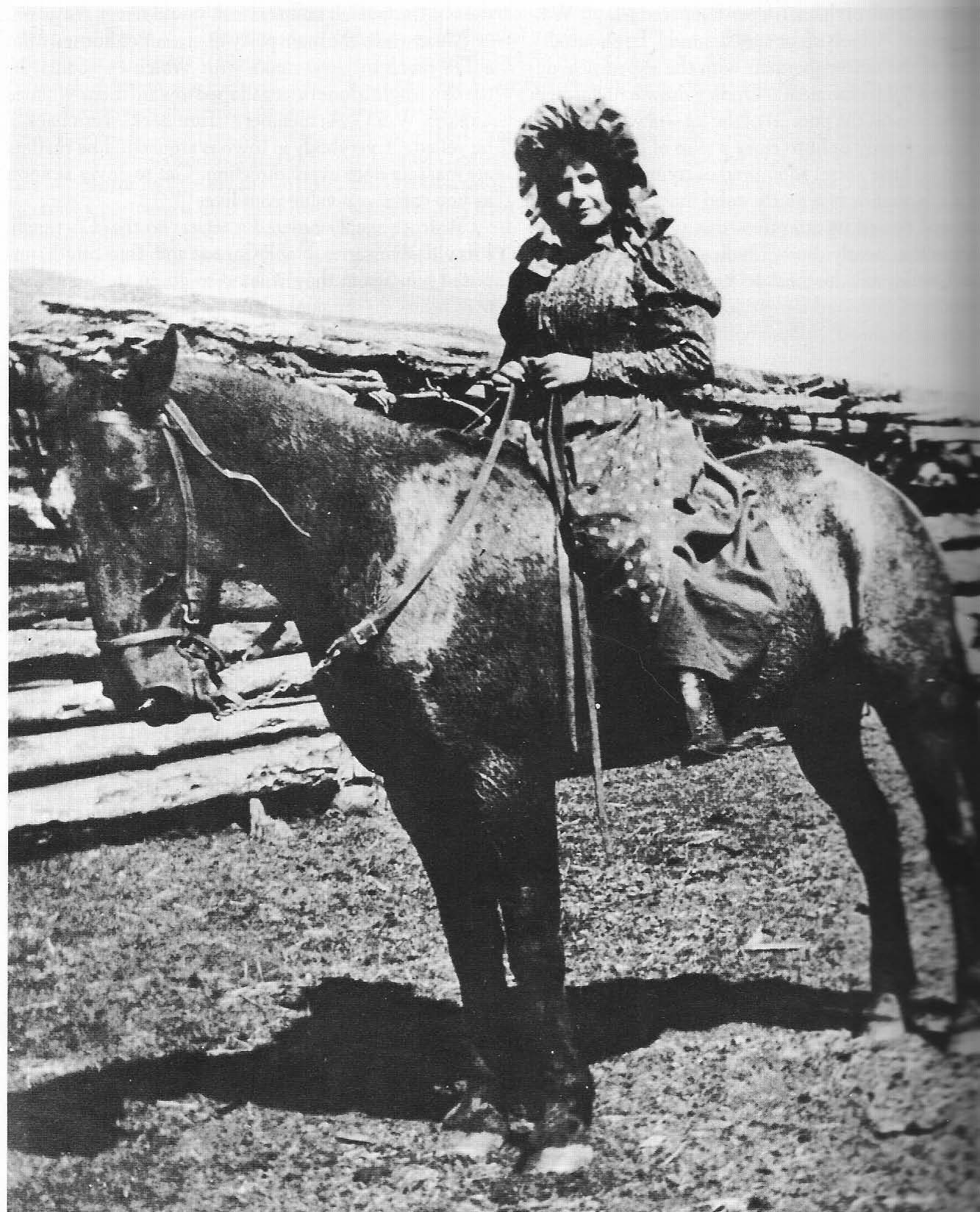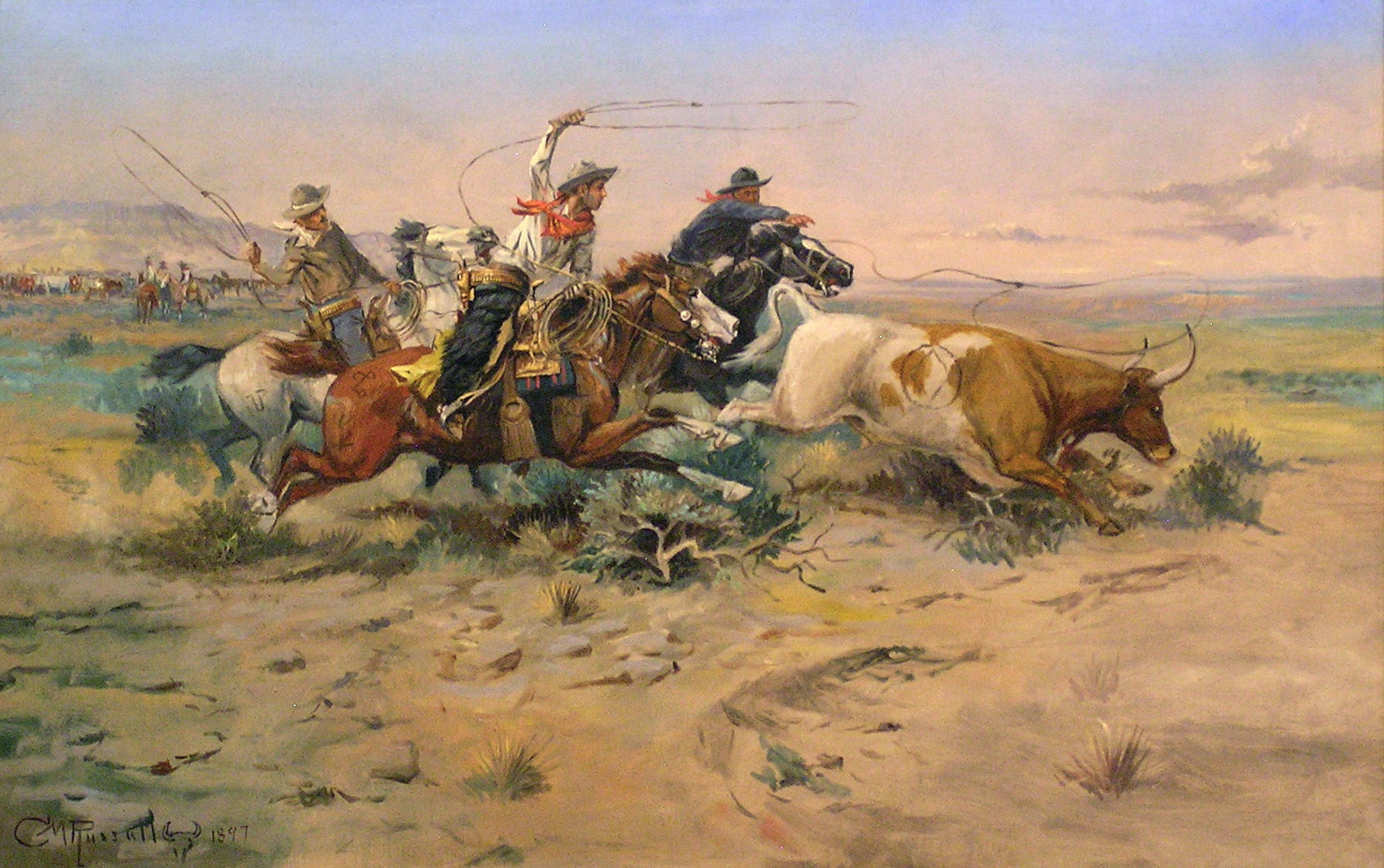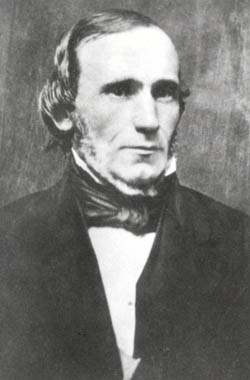|
Johnson County War
The Johnson County War, also known as the War on Powder River and the Wyoming Range War, was a range war in Johnson County, Wyoming from 1889 to 1893. The conflict began when cattle companies started ruthlessly persecuting alleged Cattle raiding, rustlers in the area, many of whom were settlers who competed with them for livestock, land and water rights. As violence swelled between the large established ranchers and the smaller settlers in the state, it culminated in the Powder River Country, when the ranchers hired Gunfighter, gunmen, who invaded the county. The gunmen's initial incursion in the territory alerted the small farmers and ranchers, as well as the Posse comitatus (common law), state lawmen, and they formed a posse of 200 men that led to a grueling standoff which ended when the United States Cavalry on the orders of President of the United States, President Benjamin Harrison relieved the two forces, although further fighting persisted.Tuccille, Jerome. ''The Roughest R ... [...More Info...] [...Related Items...] OR: [Wikipedia] [Google] [Baidu] |
Range War
A range war, also known as range conflict or cattle war, is a type of usually violent conflict, most commonly in the 19th and early 20th centuries in the American West. The subject of these conflicts was control of " open range", or range land freely used for cattle grazing, or as sheep pasture, which gave these conflicts its name. Typically they were disputes over water rights, grazing rights, or cattle ownership. Range wars occurred prior to the Taylor Grazing Act of 1934, which regulated grazing allotments on public land. Range wars included the Pleasant Valley War, Colfax County War, Castaic Range War, San Elizario Salt War, Mason County War, Porum Range War, Johnson County War, Pecos War, Fence Cutting Wars, Sheep Wars, Barber–Mizell feud, Stuart's Stranglers conflict, and others. While in previous centuries violence may have been involved, the term is now applied to nonviolent competition for scarce resources, such as between ranchers and environmentalists, or ... [...More Info...] [...Related Items...] OR: [Wikipedia] [Google] [Baidu] |
Public Domain
The public domain (PD) consists of all the creative work to which no Exclusive exclusive intellectual property rights apply. Those rights may have expired, been forfeited, expressly Waiver, waived, or may be inapplicable. Because no one holds the exclusive rights, anyone can legally use or reference those works without permission. As examples, the works of William Shakespeare, Ludwig van Beethoven, Miguel de Cervantes, Zoroaster, Lao Zi, Confucius, Aristotle, L. Frank Baum, Leonardo da Vinci and Georges Méliès are in the public domain either by virtue of their having been created before copyright existed, or by their copyright term having expired. Some works are not covered by a country's copyright laws, and are therefore in the public domain; for example, in the United States, items excluded from copyright include the formulae of Classical mechanics, Newtonian physics and cooking recipes. Other works are actively dedicated by their authors to the public domain (see waiver) ... [...More Info...] [...Related Items...] OR: [Wikipedia] [Google] [Baidu] |
Wyoming
Wyoming ( ) is a landlocked U.S. state, state in the Mountain states, Mountain West subregion of the Western United States, Western United States. It borders Montana to the north and northwest, South Dakota and Nebraska to the east, Idaho to the west, Utah to the southwest, and Colorado to the south. With an estimated population of 587,618 as of 2024, Wyoming is the List of U.S. states and territories by population, least populous state despite being the List of U.S. states and territories by area, 10th largest by area, and it has the List of U.S. states by population density, second-lowest population density after Alaska. The List of capitals in the United States, state capital and List of municipalities in Wyoming, most populous city is Cheyenne, Wyoming, Cheyenne, which had a population of 65,132 in 2020. Wyoming's western half consists mostly of the ranges and rangelands of the Rocky Mountains; its eastern half consists of high-elevation prairie, and is referred to as th ... [...More Info...] [...Related Items...] OR: [Wikipedia] [Google] [Baidu] |
Homestead Acts
The Homestead Acts were several laws in the United States by which an applicant could acquire ownership of government land or the public domain, typically called a homestead. In all, more than of public land, or nearly 10 percent of the total area of the United States, were given away free to 1.6 million homesteaders; most of the homesteads were west of the Mississippi River. An extension of the homestead principle in law, the Homestead Acts were an expression of the Free Soil policy of Northerners who wanted individual farmers to own and operate their own farms, as opposed to Southern slave owners who wanted to buy up large tracts of land and use slave labor, thereby shutting out free white farmers. For a number of years individual Congressmen put forward bills providing for homesteading, but it was not until 1862 that the first homestead act was passed. The Homestead Act of 1862 opened up millions of acres. Any adult who had never taken up arms against the ... [...More Info...] [...Related Items...] OR: [Wikipedia] [Google] [Baidu] |
American West
The Western United States (also called the American West, the Western States, the Far West, the Western territories, and the West) is census regions United States Census Bureau As American settlement in the U.S. expanded westward, the meaning of the term ''the West'' changed. Before around 1800, the crest of the Appalachian Mountains was seen as the western frontier. The frontier moved westward and eventually the lands west of the Mississippi River were considered ''the West''. The U.S. Census Bureau's definition of the 13 westernmost states includes the Rocky Mountains and the Great Basin to the Pacific Coast, and the mid-Pacific islands state, Hawaii. To the east of the Western United States is the Midwestern United States and the Southern United States, with Canada to the north and Mexico to the south. The West contains several major biomes, including arid and semi-arid plateaus and plains, particularly in the American Southwest; forested mountains, including thr ... [...More Info...] [...Related Items...] OR: [Wikipedia] [Google] [Baidu] |
Western (genre)
The Western is a genre of fiction typically Setting (narrative), set in the American frontier (commonly referred to as the "Old West" or the "Wild West") between the California Gold Rush of 1849 and the closing of the frontier in 1890, and commonly associated with Americana (culture), folk tales of the Western United States, particularly the Southwestern United States, as well as Northern Mexico and Western Canada. The frontier is depicted in Western media as a sparsely populated hostile region patrolled by cowboys, Outlaw (stock character), outlaws, sheriffs, and numerous other Stock character, stock Gunfighter, gunslinger characters. Western narratives often concern the gradual attempts to tame the crime-ridden American West using wider themes of justice, freedom, rugged individualism, manifest destiny, and the national history and identity of the United States. Native Americans in the United States, Native American populations were often portrayed as averse foes or Savage ( ... [...More Info...] [...Related Items...] OR: [Wikipedia] [Google] [Baidu] |
Class Conflict
In political science, the term class conflict, class struggle, or class war refers to the economic antagonism and political tension that exist among social classes because of clashing interests, competition for limited resources, and inequalities of power in the socioeconomic hierarchy. In its simplest manifestation, class conflict refers to the ongoing battle between the rich and poor. In the writings of several leftist, socialist, and communist theorists, notably those of Karl Marx, class struggle is a core tenet and a practical means for effecting radical sociopolitical transformations for the majority working class. It is also a central concept within conflict theories of sociology and political philosophy. Class conflict can reveal itself through: * Direct violence, such as assassinations, coups, revolutions, counterrevolutions, and civil wars for control of government, natural resources, and labor; * Indirect violence, such as deaths from poverty, malnutrition, ... [...More Info...] [...Related Items...] OR: [Wikipedia] [Google] [Baidu] |
Wild West
The American frontier, also known as the Old West, and popularly known as the Wild West, encompasses the geography, history, folklore, and culture associated with the forward wave of American expansion in mainland North America that began with European colonial settlements in the early 17th century and ended with the admission of the last few contiguous western territories as states in 1912. This era of massive migration and settlement was particularly encouraged by President Thomas Jefferson following the Louisiana Purchase, giving rise to the expansionist attitude known as "manifest destiny" and historians' " Frontier Thesis". The legends, historical events and folklore of the American frontier, known as the frontier myth, have embedded themselves into United States culture so much so that the Old West, and the Western genre of media specifically, has become one of the defining features of American national identity. Periodization Historians have debated at length as ... [...More Info...] [...Related Items...] OR: [Wikipedia] [Google] [Baidu] |
Benjamin Harrison
Benjamin Harrison (August 20, 1833March 13, 1901) was the 23rd president of the United States, serving from 1889 to 1893. He was a member of the Harrison family of Virginia—a grandson of the ninth president, William Henry Harrison, and a great-grandson of Benjamin Harrison V, a Founding Fathers of the United States, Founding Father. A Union Army veteran and a Republican, he defeated incumbent Grover Cleveland to win the presidency in 1888. Harrison was born on a farm by the Ohio River and graduated from Miami University in Oxford, Ohio. After moving to Indianapolis, he established himself as a prominent local attorney, Presbyterian church leader, and politician in Indiana. During the American Civil War, he served in the Union Army as a Colonel (United States), colonel, and was confirmed by the United States Senate, U.S. Senate as a Brevet (military), brevet Brigadier general (United States), brigadier general of volunteers in 1865. Harrison unsuccessfully ran for gov ... [...More Info...] [...Related Items...] OR: [Wikipedia] [Google] [Baidu] |
President Of The United States
The president of the United States (POTUS) is the head of state and head of government of the United States. The president directs the Federal government of the United States#Executive branch, executive branch of the Federal government of the United States, federal government and is the Powers of the president of the United States#Commander-in-chief, commander-in-chief of the United States Armed Forces. The power of the presidency has grown since the first president, George Washington, took office in 1789. While presidential power has ebbed and flowed over time, the presidency has played an increasing role in American political life since the beginning of the 20th century, carrying over into the 21st century with some expansions during the presidencies of Presidency of Franklin D. Roosevelt, Franklin D. Roosevelt and Presidency of George W. Bush, George W. Bush. In modern times, the president is one of the world's most powerful political figures and the leader of the world's ... [...More Info...] [...Related Items...] OR: [Wikipedia] [Google] [Baidu] |
United States Cavalry
The United States Cavalry, or U.S. Cavalry, was the designation of the mounted force of the United States Army. The United States Cavalry was formally created by an act of United States Congress, Congress on 3 August 1861 and ceased as a distinct Army branch in 1942.Price (1883) p. 103, 104 The name "cavalry" continues to be used as a designation for various specific United States Army formations and functions. This branch, alongside the Infantry Branch (United States), Infantry and Field Artillery Branch (United States), Artillery branches, was formerly considered to be one of the "classic" combat arms branches (defined as those branches of the army with the primary mission of engaging in armed combat with an enemy force). From the United States Declaration of Independence and the American War of Independence onwards, mounted troops were raised ad-hoc by the United States as emergencies presented themselves and were disbanded as soon as these had passed. In 1833, Congress cr ... [...More Info...] [...Related Items...] OR: [Wikipedia] [Google] [Baidu] |









